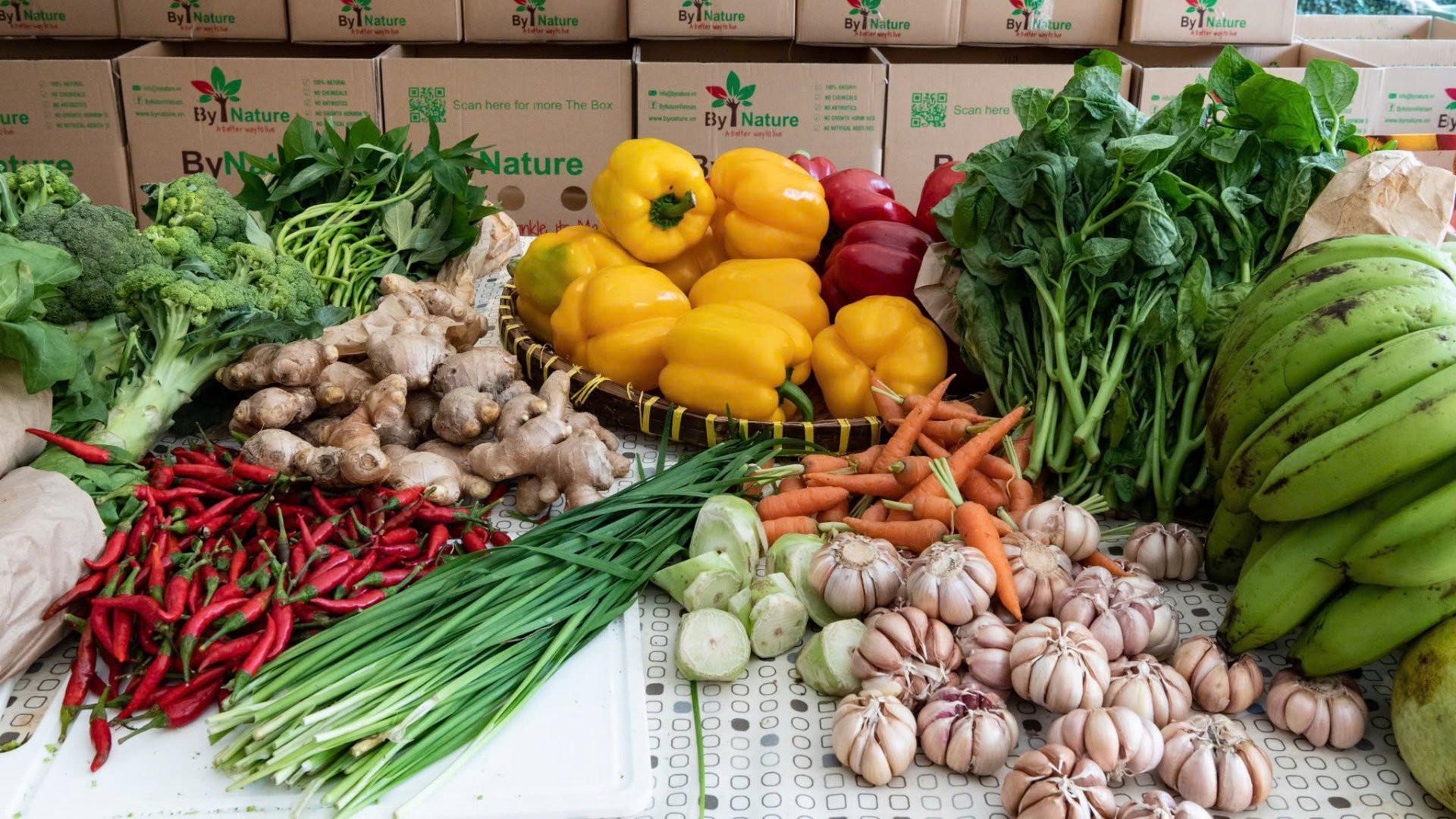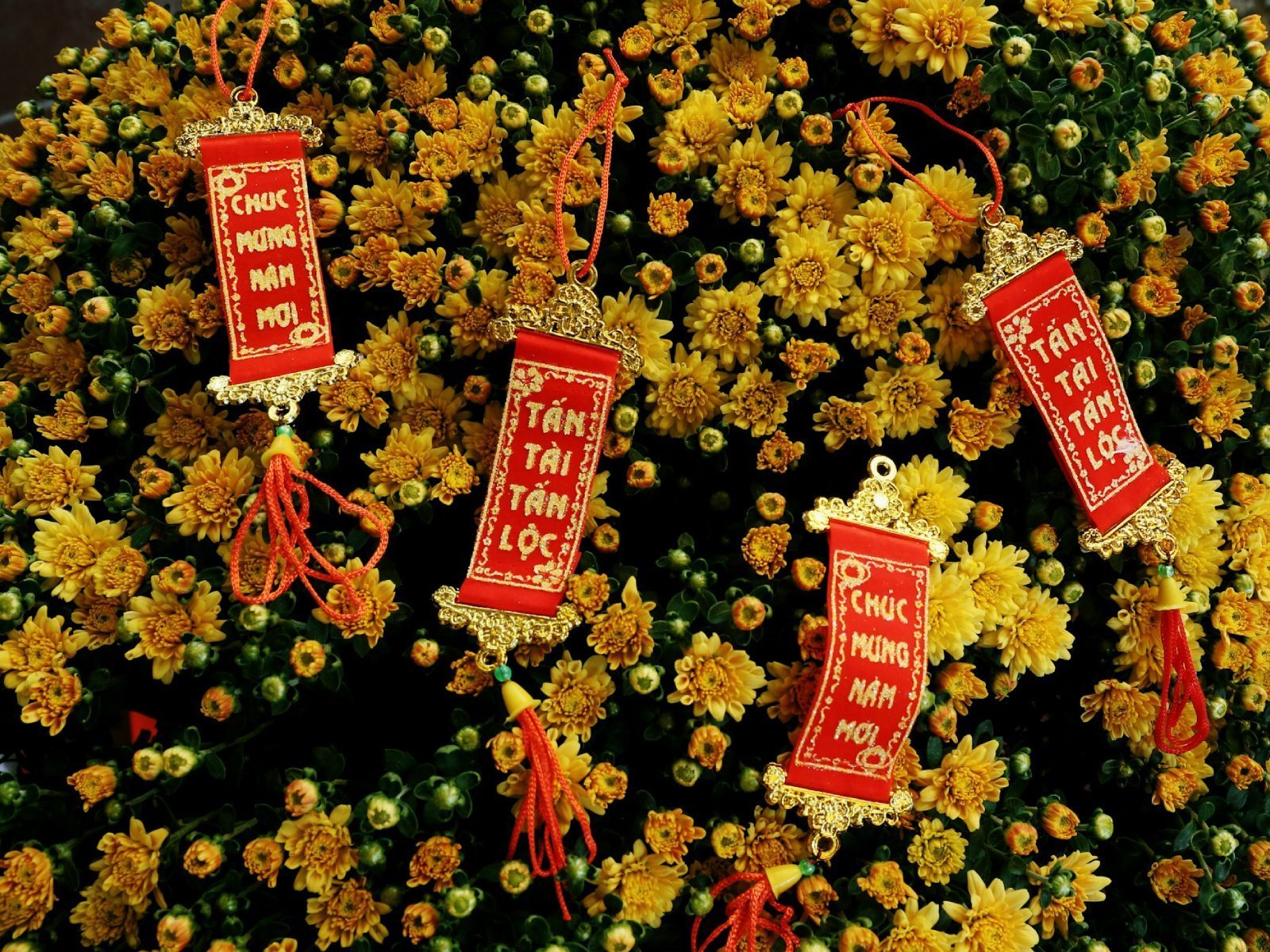Mid-Autumn Festival or Tết Trung Thu falls on the 15th day of the eighth month in the lunar calendar, when the moon and its beauty is celebrated. Believed to be the one day in the year that the moon shines the brightest and looks the biggest, families, especially those with children, across Vietnam gather to light lanterns, sip tea, and share mooncakes – all in honour of the moon and the autumn harvest.
Why do We Celebrate the Mid-Autumn Festival?
The Mid-Autumn Festival originates from China and is celebrated in many countries across Asia, including in Vietnam. Over time, the different asian cultures have evolved to celebrate the festival of the 8th lunar month in various ways.
In Vietnam, where the Mid-Autumn Festival has been celebrated for over 400 years, it traditionally has been a celebration of the autumn harvest. The rice harvest, especially in North Vietnam, is reaped in September, and Mid-Autumn Festival usually falls in the same month, occasionally in early October. As the full moon is a symbol of prosperity and a full life, the Vietnamese give thanks to the moon for the successful harvest season.
The modern Vietnamese Mid-Autumn Festival focuses on children and is known also as Children’s Festival. Every child dreams of a fun Mid-Autumn Festival filled with colourful lanterns, games with cousins, and endless mooncakes! This special emphasis of children in the Mid-Autumn Festival also has links to the harvest. Many parents and family members involved in tending the fields would be very busy right up till harvest, unable to spend time with their children. Thus, Mid-Autumn Festival is used to shower special attention and love on children after the hard work in the fields.
How Do the Vietnamese Celebrate the Mid-Autumn Festival?
In the weeks running up to Tết Trung Thu, mooncake stalls pop up everywhere, markets burst with the sales of toys, lanterns and masks.
On the night of the full moon, it is time for a family reunion. Vietnamese families will gaze at the moon and appreciate its beauty while enjoying mooncakes and tea. Children will be given lanterns to play with. Traditionally, the most popular is the carp shaped lantern, but they now come in various shapes, sizes, and colours.
The soundtrack of the Mid-Autumn Festival has to be that of lion and dragon dances. Colourful teams of dances take to the streets to loudly celebrate this festival in Vietnam.
Myths and Legends of the Mid-Autumn Festival
There are many myths and legends that adds to the mystery of the Mid-Autumn Festival in Vietnam. Children are entertained with tales and make up the fantastical Vietnamese culture. Here are two common ones:
1. Cuoi and the Banyan Tree
The legend started with a hardworking man named Chu Cuoi (Cuội) who made a living by gathering firewood in the forest. One day, Cuoi found a magic Banyan tree that had leaves with healing powers, and he took it home.
While harvesting the plant, the tree started to uproot itself and float away. Cuoi could not bear to see the magical Banyan tree disappear and grabbed on to it for dear life. Up and up they went, leaving the earth and eventually landing on the moon. It is said that you can see Cuoi’s and the Banyan tree’s shadow on the full moon.
2. The Harvest Monster
In ancient times, every eighth month in the lunar calendar, a monster called Lân would appear. The monster came to steal the harvest of the hardworking people and wrecked havoc wherever it went, causing people to lose their homes and livelihood.
A clever monk and his students decided it was time to stand up to the monster. Some students wore red and leapt up and down to scare the monster, while others joined in the effort by beating drums and making loud noises. They were successful and the frightened monster left, never to return again!
To celebrate this success, every year after that, people dressed as both the lion and the students, dancing and making merry. This is the legendary origins of lion dance or mua lan, and why the aforementioned lion and dragon dances have become a big part of the moon festival celebrations till today in Vietnam.
The Fascination with Mooncakes
What are mooncakes?
Mooncakes, for many, are the most loved part of the Mid Autumn Festival in Vietnam. Sweet, savoury, round, square, baked, mocha-style – they come in various forms, but mostly with a thin crust and a filling, with intricate designs on the top. Mooncakes are the most beautiful traditional food and are only eaten during the Mid Autumn Festival.
The story of mooncakes
Mooncakes in Vietnam have a shared cultural history with China. According to legend, the Chinese military used mooncakes to pass on secret messages in order to organise a revolt against the Mongols in the Yuan Dynasty (1271 to 1368 AD). The Mongol rulers watched the Chinese generals closely, so the Chinese had to devise a clever way to communicate. They took the opportunity of the Mid-Autumn Festival (the Chinese have been celebrating the festival since the Song Dynasty, 420 AD) to distribute secret messages through the the gifting of mooncakes. Little pieces of paper were buried in the heart of the mooncakes which were then innocently dispersed. Another variation of the legend has it that the mooncake surface design itself contained the messages and the mooncakes had to be arranged like a puzzle to reveal its secret. Thus till today, mooncakes in China and Vietnam have beautiful intricate designs embossed on them.
What do mooncakes taste like?
Mooncakes no longer contain little bits of paper inside. Instead, the classic mooncake has a single duck egg yolk, representing the full, rich, moon. The egg yolk is encased by sweet lotus paste and covered with a light pastry. The cakes are traditionally shaped in wooden moulds and then placed in ovens. Baked mooncake nowadays have more variety, some of them contain up to as many as four egg yolks! Popular cake paste flavours in Vietnam include green tea, red bean, and mung bean. The mooncakes might also contain candied fruit, coconut shavings, mixed nuts, and cooked meat.
Some people prefer the modern versions of the mooncake, which are non-baked, the outer layer is made with rice flour mocha-style. They are often called snow skin or snowy mooncakes for the soft, light, delicate outer layer reminiscent of snow. The snowy moon cake has even more variety in flavour. They can be made out of chocolate, ice cream, jelly and more.
The importance of mooncakes
In Vietnam, square mooncakes represent the earth and round mooncakes represent. They are the perfect symbol of Tết Trung Thu.
The Mid-Autumn Festival is celebrated with plenty of mooncakes. Throughout the eight lunar month, Vietnamese families gather to share mooncakes and enjoy each other’s company. Especially on the 15th day, they are eaten at night under the bright moonlight.
Gifting of mooncakes are a large part of the Mid-Autumn Festival. In Vietnam, boxes and boxes of cakes are given to relatives, family friends, business contacts, bosses, colleagues, and more. This thoughtful gesture is well received by everyone.
Where to buy mooncakes?
Mooncakes can be found everywhere! From luxury hotels to neighbourhood bakeries, mooncakes are ubiquitous during the Mid-Autumn Festival in Vietnam.
Some popular brands include
- Givral
- Brodard
- Kinh Do
- Annam Gourmet
- Nhu Lan
- Hy Lam Mon
- Intercontinental Hotel
- New World Hotel Saigon
- The Marriott Hotel
- D’Art Chocolate
Mooncakes are such an essential part of the food eaten during Tết Trung Thu Festival, be sure not to miss out. A fun mid autumn activity to do at home, especially with children, this lockdown would be to make your own mooncakes. Try your hand at it here!
Now that you know the history and legends of the Mid-Autumn Festival as well as where to purchase mooncakes, be sure to also get some lanterns for your night time celebration. Although the festivities on the streets may be smaller this year, the Mid-Autumn Festival traditions can still be observed at home. After all, at its heart, the festival is celebrated with loved ones. We wish you all a delightful Mid-Autumn festival!
Be sure to keep updated about festivals and what’s ongoing in Ho Chi Minh city here






